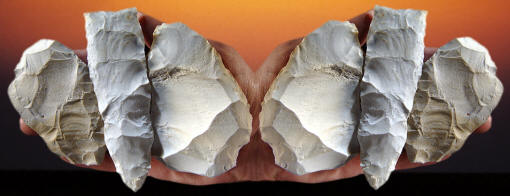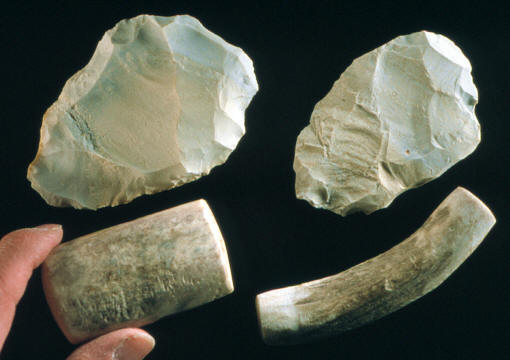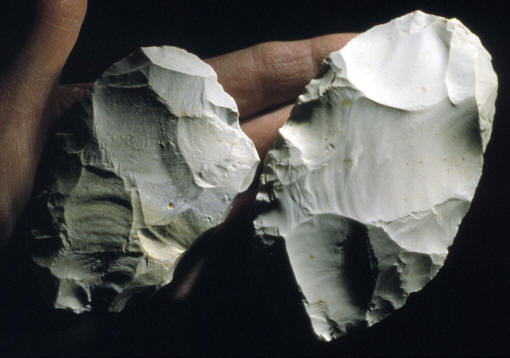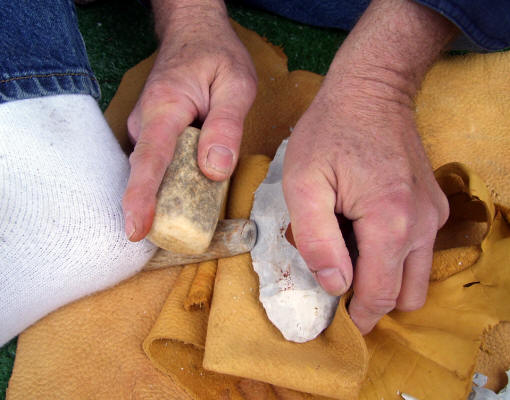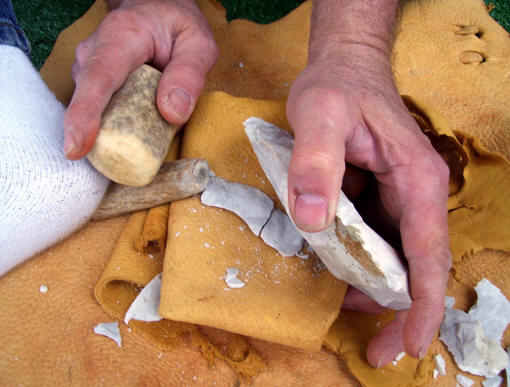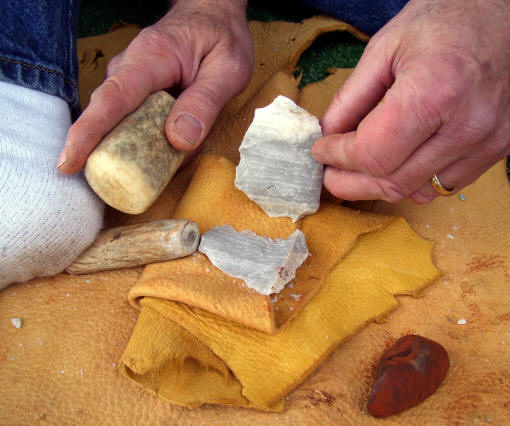|
|
|
Ivory artifacts similar to this example from Blackwater Draw also occur on Eurasian Upper Paleolithic sites. Some of those artifacts, although they are similar in size, shape and material to the Blackwater Draw ivory piece, do not show any use wear and are considered unfinished "blanks" intended for later use. But this is clearly not the case for the billet/burnisher from Blackwater Draw. It has use wear on three different surfaces indicating that it was used as some type of tool. Agogino and Haynes concluded at the time of its discovery that the smoothness of one end indicated that it was used as a polisher possibly for leather. The other end was not nearly as smooth. |
|
|
|
|
Semenov explains that upper Paleolithic bone tools that look like mattocks (a tool used for loosening the soil or digging up and cutting roots, etc.) are often classified as burnishers. Burnishers are tools used for rubbing skins. Almost all skins undergo a process of applying pressure to the surface that compresses the outer layer to make it look prettier, tougher and impermeable. In today's modern industry, large machines with rollers are used for this purpose. Ancient burnishers, made of bone and ivory are small and were held in the hand. They were used to apply a lot of pressure over small areas. Color was applied by mixing red ochre and grease and rubbing the mixture into the surface of the skin. Traces of red ochre has been found on some Paleolithic burnishers. |
|
|
|
|
Similar ivory artifacts to the one from Black Water Draw have been found on a Gravettian site (26,000 before present) in Czechoslovakia and are described as flintknapping billets (hammers). Experiments with replicated tools have indicated they may have been used in the process of retouching (flaking) flint artifacts. |
|
|
|
|
At this point in time it seems that the Billet/Burnisher from Black Water Draw may be a multi-purpose tool. It may have been used as both a burnisher and a flintknapping billet. There seems to be no clear evidence that it was used exclusively for any one single purpose. |
|
|
|
|
Another example of this tool's possible use is illustrated in this article by Mike Dothager. He made a replica out of moose antler and demonstrates how it may have been used with indirect percussion rocker-punch technology. Flaking patterns made with this process show a resemblance to Clovis biface reduction technique. There is no doubt that a tool of this size and material can be used as a flintknapping tool. |
|
|
|
|
The ivory billet/burnisher from the Blackwater Draw Locality No. 1 site is extraordinary for its rarity. It was a unique discovery indeed, but then it was lost and later it was discovered yet again. So it would seem that all the science in the world is never quite enough. More often than not, luck is still necessary, still part of the equation upon which new discoveries are made. |
|
|
"REFERENCES"
1957, Wormington, H. M., "Ancient
Man In North American," pp. 47-50. |
|
